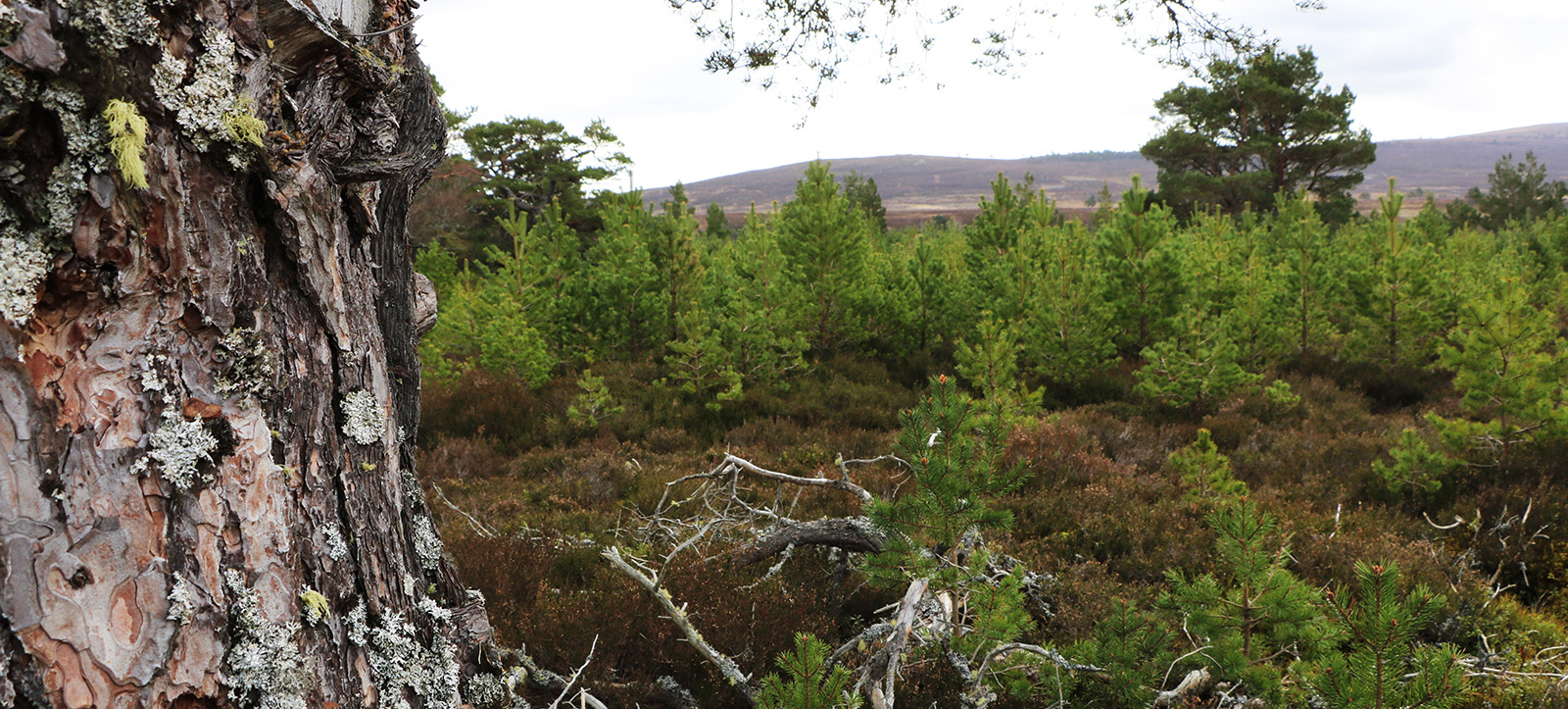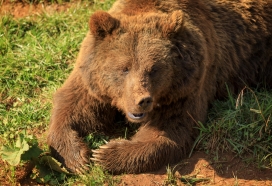
Español FSC has joined 100+ NGOs supporting the #Together4Forests movement.
Acerca del FSC
Como líder en silvicultura sostenible, se confía en el FSC para proteger los bosques para todos, para siempre.
Más información sobre FSC >Quiénes somos
Nuestra historiaLiderazgo GlobalConsejo de AdministraciónComité de Políticas y EstándaresComité Permanente de Pueblos IndígenasOficinas LocalesNuestro trabajo
Por qué importan los bosquesEstrategia global del FSCCómo funciona el sistema FSCGobernanzaSoluciones FSCExplorar certificación
Muestre su compromiso con la silvicultura responsable obteniendo la certificación FSC.
Más información sobre la certificación >Qué significan las etiquetas FSC
Cada etiqueta FSC representa un abastecimiento sostenible que pone a los bosques y a las personas en primer lugar.
Más información sobre nuestras etiquetas >Cadena de bloques
Estamos utilizando blockchain para garantizar el cumplimiento de la certificación en toda la cadena de suministro.
Aprende más >Observación de la tierra
Estamos aprovechando el poder de los datos satelitales para ayudar a los auditores a monitorear la salud de los bosques.
Aprende más >Identificación de madera
Estamos probando tecnología de punta para rastrear y probar los orígenes de la madera.
Aprende más >Estándares FSC
Nuestros rigurosos estándares de certificación forestal son la base del sistema FSC.
Aprende más >Procesos actuales
Vea qué políticas, estándares y procedimientos se están fortaleciendo actualmente.
Aprende más >Integridad del sistema
Estamos comprometidos a mantener la credibilidad y la transparencia del sistema FSC.
Aprende más >Investigaciones abiertas
Explorar nuestras investigaciones activas sobre organizaciones que pueden amenazar el sistema FSC.
Aprende más >Opciones de certificación y licencia
Encuentre la certificación o licencia adecuada para su negocio.
Empezar ahora >Otros enlaces relacionados
Certificación de Cadena de CustodiaLicencia promocionalCertificación de ProyectosUtilice el logotipo de FSCPor industria
ConstrucciónModaFibraMueblesCaucho naturalPapel de embalarVenta al por menor y comercio electrónicoMaderaOtros productos forestalesExplorar el Impacto Verificado
Impacto Verificado para las empresasImpacto Verificado para administradores forestalesEU Regulation on Deforestation-free Products (EUDR)Gestores forestales
Garantice la salud y la viabilidad a largo plazo de su bosque con la certificación FSC.
Aprende más >Gestores de bosques pequeños, de baja intensidad o comunitarios
La certificación FSC no es solo para corporaciones globales. Tenemos soluciones que se adaptan a cualquier bosque.
Aprende más >Gobiernos
Haga un progreso real hacia sus objetivos de sostenibilidad y asegure el futuro de nuestros bosques.
Aprende más >Hazte miembro
Haga oficial su compromiso con el manejo forestal responsable al convertirse en miembro del FSC.
Aprende más >Portal de miembros
La plataforma de colaboración del FSC para miembros actuales.
Aprende más >Participa en la Asamblea General
26-31 Octubre 2025 | Panamá
Participa en el proceso de toma de decisiones más importante del FSC y ayuda a influir en el futuro de nuestros bosques
Únete a nuestra misión
Ponga su pasión a trabajar creando un futuro mejor para los bosques y las personas en todo el mundo.
Aprende más >Más información sobre FSC
Qué significan las etiquetas FSCPor qué importan los bosquesCuentos del bosqueCómo funciona el sistema FSCSoluciones FSCEstrategia global del FSC 2021-2026Noticias e Impacto
Manténgase actualizado con lo último de FSC y el mundo de la silvicultura sostenible.
Ver todas las noticias >Otros enlaces relacionados
Ver todas las historiasLos Heroes Anonimos del BosqueRincón de prensa
Infórmese sobre las próximas oportunidades de colaboración con los medios de comunicación y encuentre recursos relevantes.
Más información >Blog
Amplíe sus conocimientos sobre bosques, gestión forestal y otras soluciones para la naturaleza.
Más información >Otros enlaces relacionados
Sustainable forestryGestión forestalPor qué importan los bosquesCentro de aprendizaje
Declaraciones de posiciónPodcastsVídeosReporte anualInvestigación del consumidorFormación electrónicaCampañasHerramientas y recursos
FSC ofrece una variedad de herramientas y recursos para ayudarlo a trabajar con nuestra organización.
Ver la lista completa >Encuentre todos los documentos relacionados con los estándares, políticas y procedimientos del FSC.
Plataforma de ConsultaAbierto para comentarios: Ayude a fortalecer los procedimientos y políticas de estándares del FSC para su revisión.
Formación electrónicaAprenda sobre el sistema FSC a través de inmersiones profundas en temas relevantes.
Búsqueda de certificadosAcceda a la información más reciente sobre los titulares de certificados FSC.
Para miembros del FSC: acceda a nuestra plataforma principal de colaboración.
FSC Brand HubPara titulares de certificado FSC y titulares de licencia promocional. Acceda a las marcas de FSC, campañas, disenos, y otros recursos.
Portal de MarcasPara titulares de certificado FSC y titulares de licencia promocional. Acceda a la plataforma de Certificate Status Watch.
Para titulares de certificaciones y licencias FSC. FSC Trace es una plataforma segura que garantiza una verificación del cumplimiento sin fisuras a lo largo de toda la cadena de suministro.
FSC Risk HubEvalúe, visualice y mitigue los riesgos en el abastecimiento forestal con nuestro panel de control de evaluación de riesgos.
Elija entre la selección de las historias y documentos más recientes a continuación.
Español FSC has joined 100+ NGOs supporting the #Together4Forests movement.
El Procedimiento de Servicios del Ecosistema FSC ha ayudado a Maderacre a verificar sus impactos positivos sobre la biodiversidad y el carbono.
Las empresas comprometidas con el manejo forestal sostenible en el Congo están contribuyendo a mejorar la vida de los Pueblos Indígenas, como los Baaka, con dignidad.


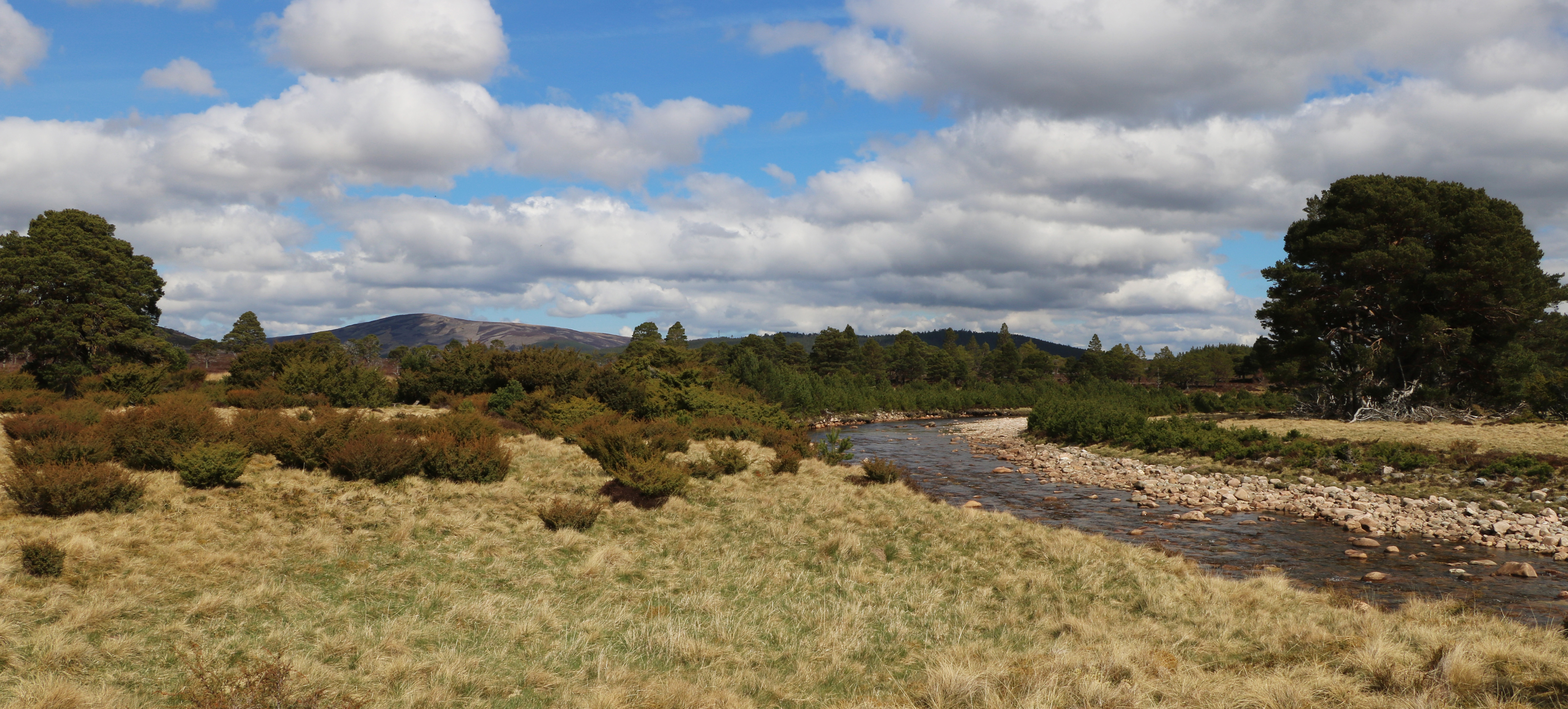
On a day like today, their office surely can’t be bettered. The 23,000 ha of these Highland Estates, of which Kinveachy forms just over a fifth, are comprised of ancient Caledonian pinewoods, forest plantations, heather moors and a section of the Dunlain river, spawning tributary of the Spey. Managing this landscape year-round, through all weathers and often late into the night, can’t be easy. And this land, so altered over centuries by human hand and now devoid of apex predators, is vulnerable to change.
The Strathspey Estate is home to a diversity of wildlife, ranging from red grouse, mountain hare, and other upland species to a variety of birds of prey, including buzzards, golden eagles, and peregrine falcons. Woodland cover in Scotland declined to an all-time low following the First World War, but here we can see remnants of natural forest, dominated by Scots pine, support species that rely heavily on this habitat, including Scottish crossbills, black grouse, and Capercaillie.
Much of the Estate falls within the Cairngorms National Park boundary, and more than 5,700 ha have been designated Sites of Special Scientific Interest. Large areas are also Special Protection Areas and Special Areas of Conservation. These designations have caused management priorities to shift, and the delivery of specific and measured biodiversity benefits is now high on the agenda. As we make our way through the estates, we pass a grey stone lodge – once used to house visiting hunters, it is now under renovation to be put to another use, evidence of these shifts in action.
One of the species most under threat in the area is the Capercaillie, a large woodland grouse. Reintroduced in the 19th century after becoming extinct in Scotland in the 18th century, it is again at serious risk of disappearing from the Scottish woodlands. Strathspey, Will tells us, has the largest concentration of Leks (Capercaille breeding displays) in Scotland, but the population is declining to this last stronghold.

Agreeing with the recent NatureScot Scientific Advisory Committee Review of Capercaillie Conservation and Management, Will and Ewan identify predation and human disturbance as key factors. They explain that in the 24 hours prior to our visit, a Capercaillie cock was killed by a fox and a lek deliberately disturbed by a member of the public (who was charged by the Police).
With much of British wildlife under threat, and many species legally protected, one or more threatened species may need to fight it out with another for survival. Take pine martens who, like Capercaillie, are a protected species in the UK - they are thriving in this area of Scotland, but this is thanks in-part to a diet of Capercaillie eggs! As other areas of the UK boost their depleted pine marten populations via translocations, perhaps in time some of the estate’s martens will be helped on their way to more southerly climes.
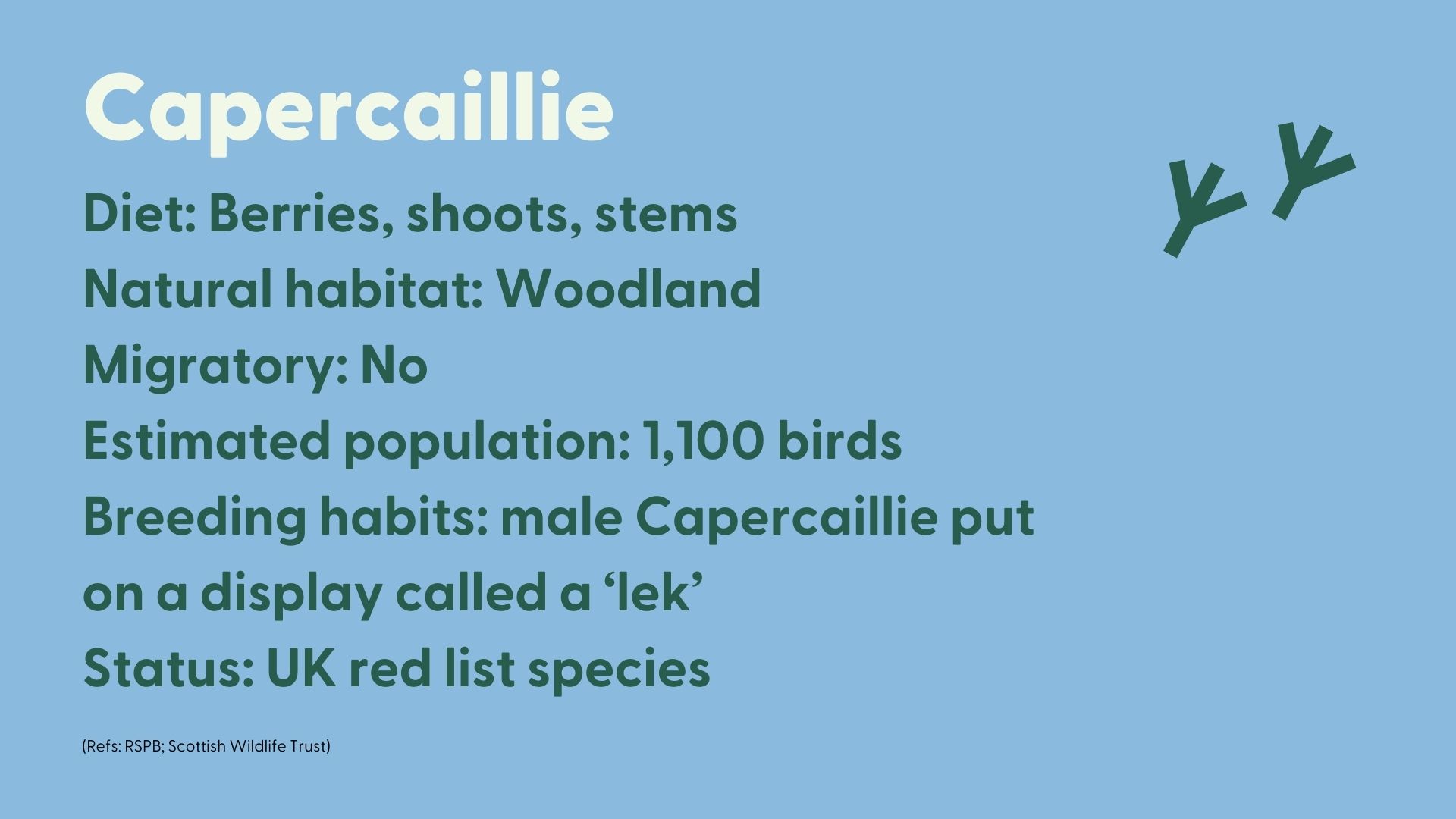
(Refs: RSPB; Scottish Wildlife Trust)
In the meantime, Will, Ewan and the rest of the estate team do their best to improve the habitat they have, encourage the public to avoid lekking birds and to monitor the situation – recording not only quantitative data but also their observations on the birds’ behaviour and preferences. Will explains that in one nearby lek, which is worryingly close to human activity, Capercaillie numbers are stable or even increasing. Surprisingly this lek, like many others, is to be found in a plantation rather than a natural forest. However, he continues, its resilience may be partly due to the area's undulating ground, which provides excellent hiding places for the birds. Thinning – removing certain trees to allow others the chance to thrive - has improved habitat structure, providing a mix of open canopy areas to allow growth of the understory (especially blaeberry needed to provide the insect diet of the chicks) and dense areas that provide cover.
Indeed, enabling wildlife to access the whole range of habitats it requires to complete its life cycle successfully is something Will and Ewan agree is crucial. The scale of the estate and the mosaic of landscapes it provides allows for flexibility and a landscape approach to its management.
Some interventions are more experimental. Like many birds, Capercaillie need to consume gastroliths – small stones to help them to digest their food. And so, Ewan has begun placing piles of quartz grit in safe locations for the Capercaillie to discourage them from picking up grit from certain well-used tracks, where they are more vulnerable to disturbance by people.
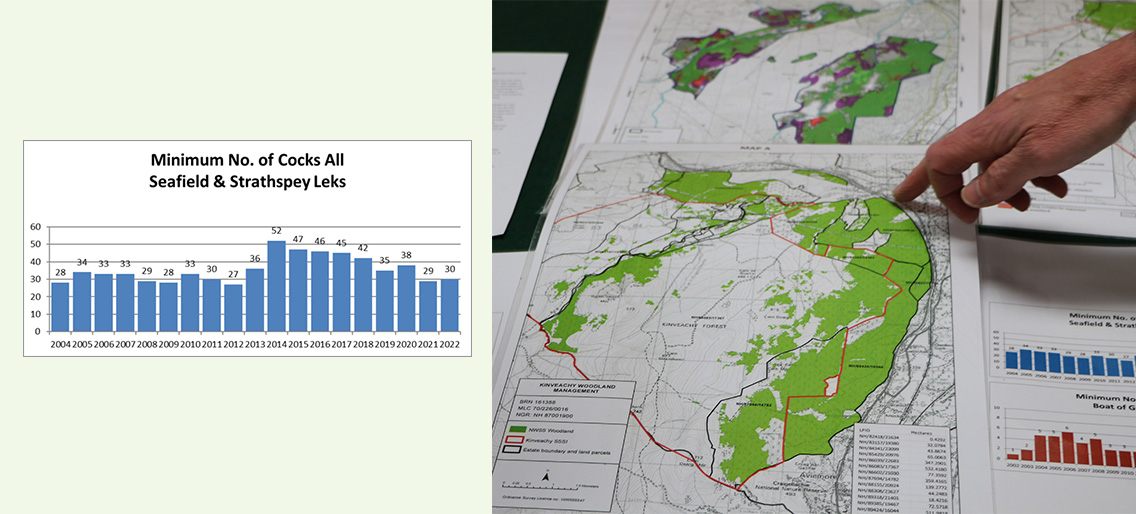
Graph caption: A lek is a breeding display put on by a male Capercaillie. This graph shows the minimum amount of male birds (cocks) in all of the Seafield and Strathspey leks each year.
Having held FSC forest management certification for more than 20 years via the Tillhill group scheme, the stewards of this forest view its requirements as just another part of their day-to-day management. The biggest impact has been on record keeping - helping to ensure continuity between different forest managers. The auditing process is useful in providing new and different perspectives on issues and practices and encourages managers to question their approaches. This continual review and readjustment of monitored objectives, and the ability to meet demand for certified timber from mills are key benefits of certification for the estates. Together they comprise 10,800 certified hectares and produce a combined 25,000 tonnes of timber each year.
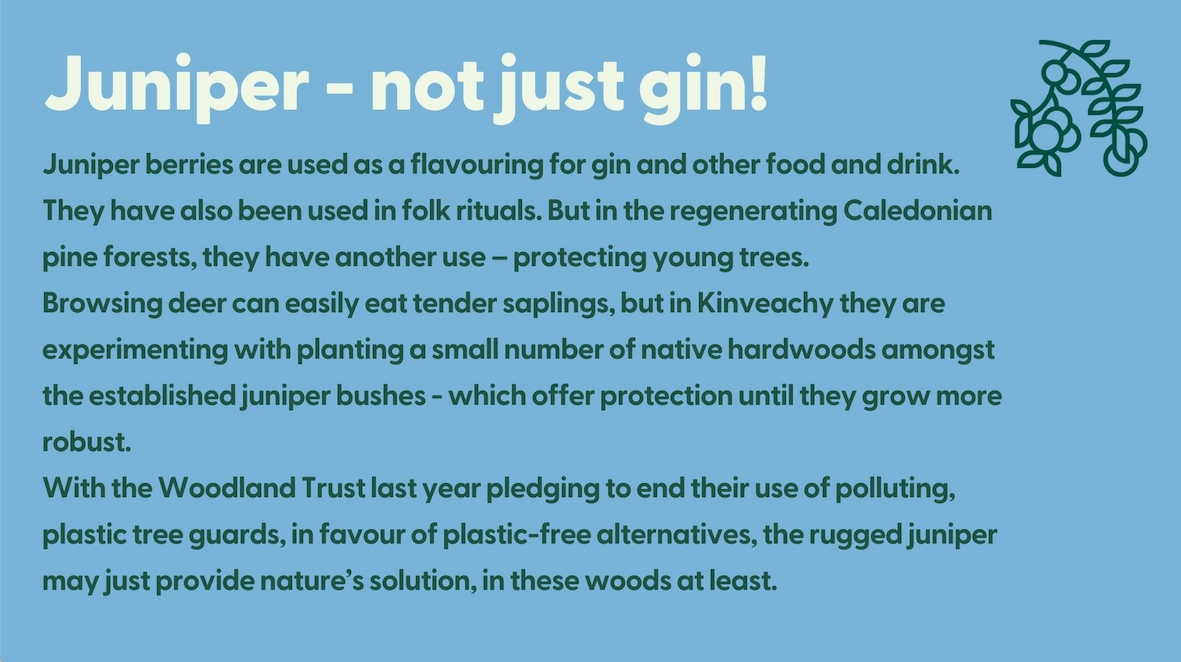
We stop in the valley bottom, happily spotting a variety of birds but none of the majestic deer, so emblematic of Scotland. Much of the estate’s work focuses on deer management which gives special attention to controlling the deer population in the area. This is important for supporting natural forest regeneration and striking a biodiversity balance in the absence of apex predators. The estate values the deer as an important part of the habitat and managing the population at an appropriate level is challenging but vital to provide a range of benefits.
What are the problems of too many deer, we ask. The answer: mainly browsing – eating up the fresh young shoots of saplings – which can lead trees to be damaged, deformed or killed, hampering growth and regeneration. Deer fencing can be used to keep them out of vulnerable areas, but it’s a problem for Capercaillie, who can be killed if they fly into it.
Every action has an impact, everything is linked. Thus, the use of fencing is minimised and made more apparent to the birds by marking with wooden droppers, a process that is ongoing to replace the old plastic netting. The deer are constantly moved around the estate, much as they would be by a natural predator, to reduce damage from browsing. Or at least, almost constantly – in harsh winters, when they seek refuge in woodland areas, they are allowed to rest to ensure their welfare and have, in some years, been fed to keep them away from sensitive regeneration.
As we near the end of our tour and the edge of the forest, the predominant tree species changes. The Scots Pine takes a backseat to the slowly leafing birch and aspen, and Ewan points out one large stand of aspen which is actually not a number of separate trees but one. The aspen is an interconnected clone – one being, or rather two, divided as it was by the construction of a road --and somehow underlining the day’s recurring themes of natural connection and human intervention. With commitment to keeping the forest in balance, the stewards of the Seafield and Strathspey Estates can be sure that their management will keep the forest resilient for many years to come.
